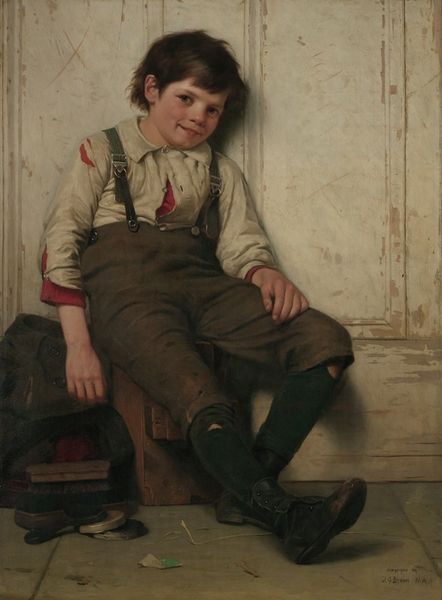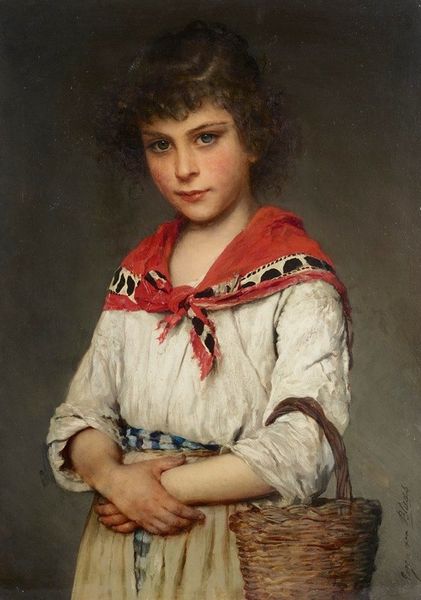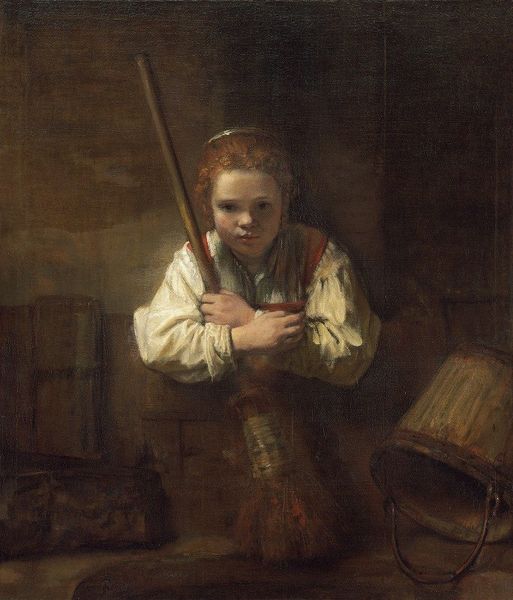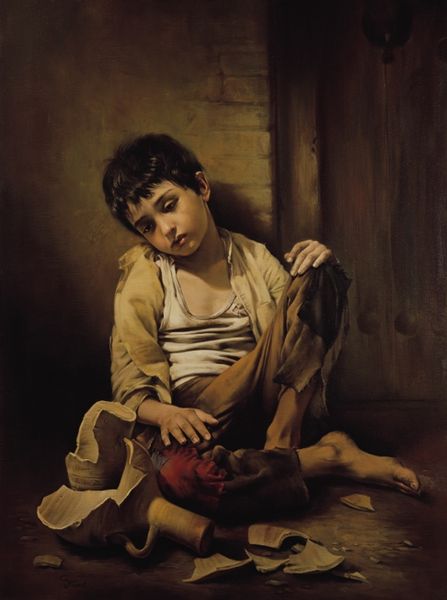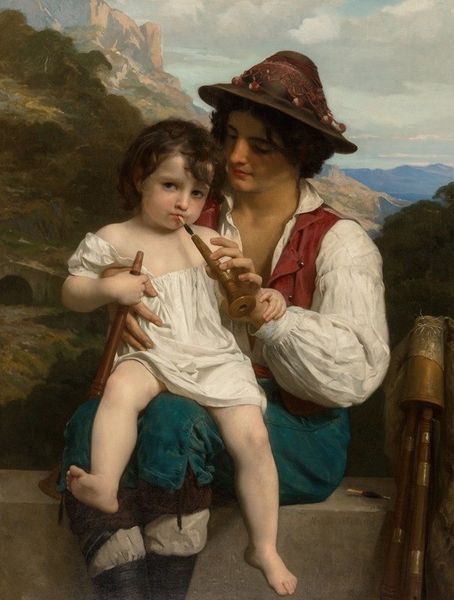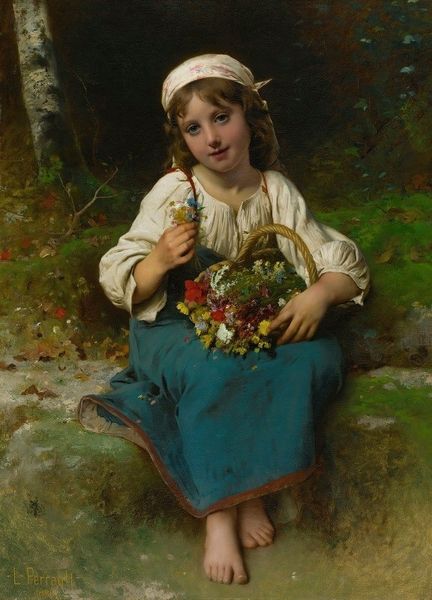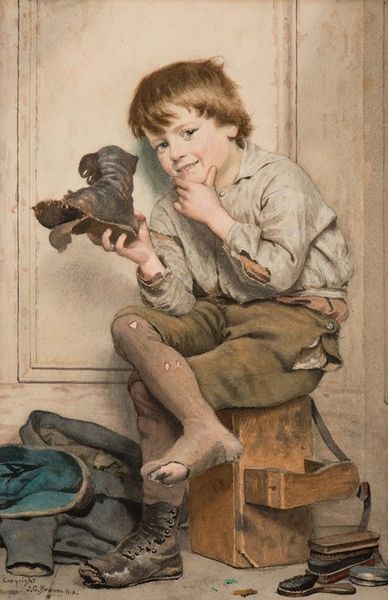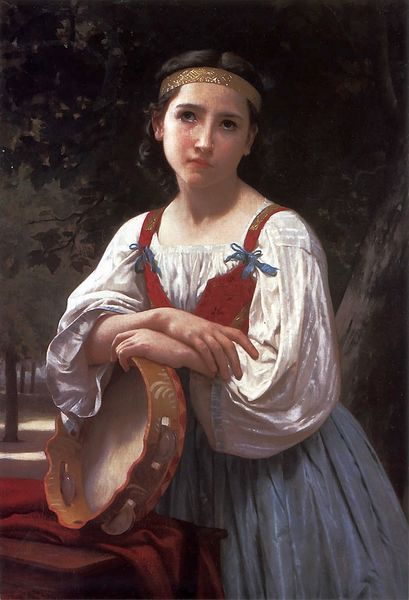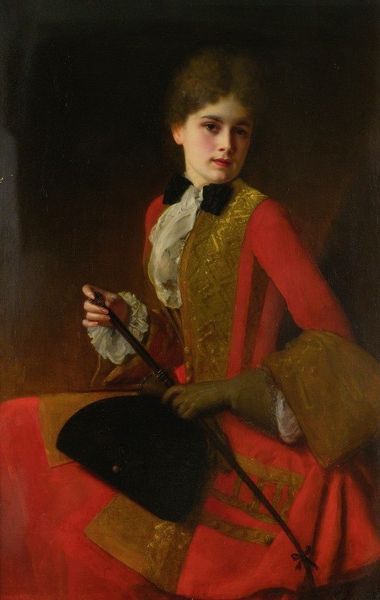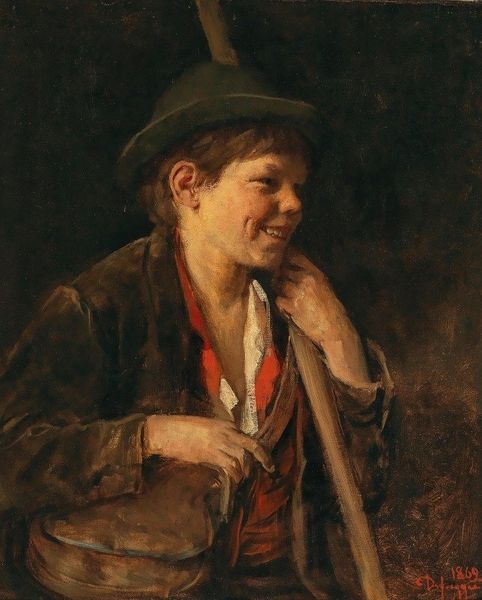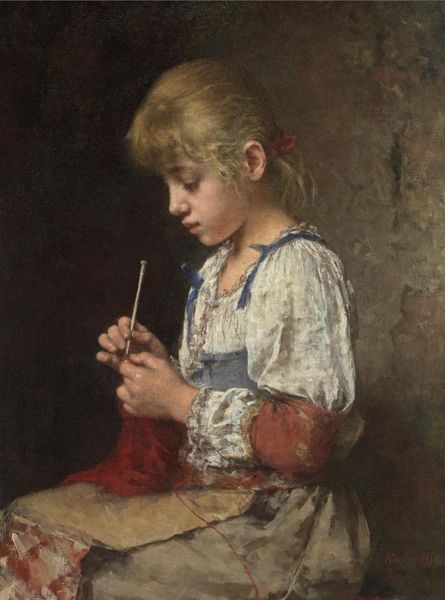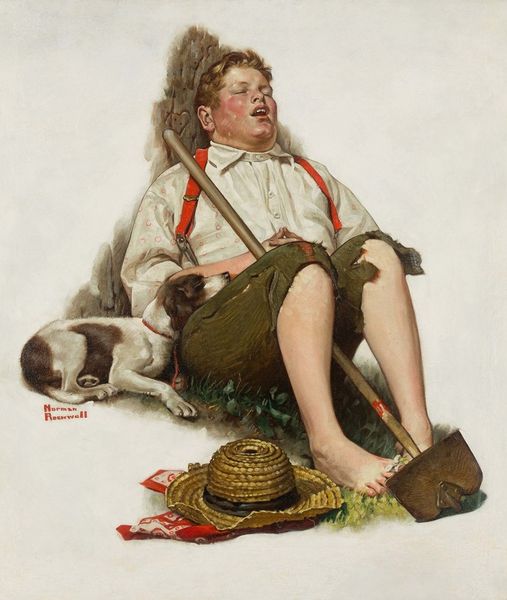
Copyright: Public Domain: Artvee
This is William Bouguereau's painting of a pifferaro, a street musician, made sometime in the mid-19th century. Bouguereau was a celebrated academic painter, known for his idealized, realistic depictions of peasant life. But his work also speaks to the complex cultural dynamics of the time. The figure of the pifferaro, often a young boy, was a common sight in the streets of Italy, playing traditional music for spare change. Bouguereau captures this figure with a certain sentimentalism, imbuing him with a kind of rustic charm. But look closer. There's a tension here, between the romantic vision of rural life and the harsh realities of poverty and child labor. During this period, many European artists were drawn to the Italian countryside, seeking an escape from the industrializing cities. Yet, these images, while seemingly innocent, often gloss over the social and economic inequalities that shaped the lives of the people they depict. They offer a glimpse into a world on the cusp of change, where traditional ways of life were increasingly threatened by modernization. How does the painting reflect the way society views work and tradition?
Comments
No comments
Be the first to comment and join the conversation on the ultimate creative platform.
